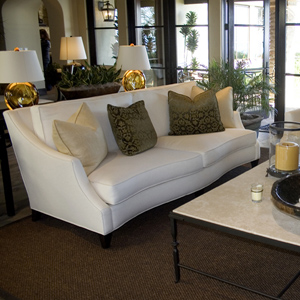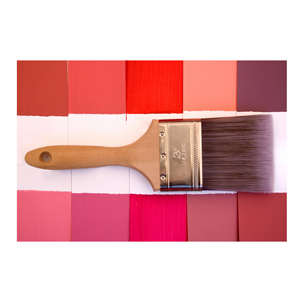Choose your room's color palette strategically. For example, shades of red promote energy and socializing.
Quick Color Tip
Choose your paint colors based on the function of the room and the mood you want to create: blues for tranquility and relaxation, reds for socializing and gathering.
-
6 Quick Room Fixes
Simple solutions to six common decorating mistakes.
- by Suzanne Gannon
Some of the most common mistakes do-it-yourselfers make when decorating their homes are actually very easy to fix. To find out how, we consulted interior designer Kerrie Kelly, owner of Sacramento-based All American Design & Furnishings.
Problem #1: Lack of lighting
Solution: Bringing light into a room—particularly a mix of artificial lighting and sunlight—can greatly improve the feel of the space. A balanced mix of the two sustains the warmth, while allowing flexibility in creating different moods. Table lamps and floors lights with dimmers are great additions that provide extra control.
Problem #2: Too much furniture
Solution: Choose furniture that’s multi-purpose. Whether it’s an ottoman that can double as seating or a side table that provides hidden storage, versatility should be the driver in purchasing key pieces. This strategy prevents overcrowding and helps visually open up a space.
Problem #3: Decorating without a color plan
Solution: Color is a powerful tool. Use it to accentuate architectural details, direct traffic flow, or tie together your fabrics and furnishings. Choose your colors based on the function of the room and the mood you want to create: blues for tranquility and relaxation, reds for socializing and gathering.
Problem #4: Furniture as wall-flowers
Solution: Allow your room to breathe by pulling your furniture away from the walls. Floating furniture in the middle of the room creates a sensation of spaciousness. Use an area rug to pull together fabrics and to anchor a space.
Problem #5: Design based on outlet locations
Solution: When creating your floor plan, place your furnishings for maximum visual impact and functionality. Surround sound, wireless electronics, and docking stations have liberated us from traditional media storage. Whether you choose to retrofit an antique armoire or wall-mount a flat-screen television behind a drapery, it’s easy to make audio-video placement both functional and stylish.
Problem #6: Hanging art too high or too low
Solution: Misplaced art can throw off your room’s entire feel. Hang art and photographs at eye level (unless you’re unusually short or tall) to create the greatest impact, and don’t be afraid to combine photos, paintings, drawings, and maps into a montage. Or use a floating shelf to prop frames of various sizes and finishes against a wall for a chic collage effect.



